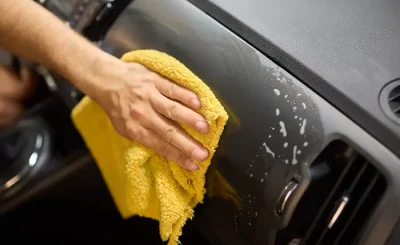Imagine a world where a mechanic prints a replacement car part on-demand—no waiting for shipments, no hunting through junkyards. That future isn’t as far off as you might think. 3D printing is quietly revolutionizing auto repair, and honestly, it’s about time.
Why 3D Printing is a Game-Changer for Auto Repairs
Traditional car part manufacturing is slow, expensive, and, well, kinda wasteful. Molds, tooling, mass production—it’s a whole thing. 3D printing cuts through the noise. Here’s why:
- Speed: Need a rare part for a vintage car? Print it in hours, not weeks.
- Cost: No warehouse storage fees or middlemen. Just raw materials and a printer.
- Customization: One-off fixes or performance upgrades? No problem.
That said, it’s not all rainbows and unicorns. There are hurdles—material limitations, certification headaches—but the momentum is undeniable.
How 3D-Printed Parts Are Already Changing the Game
Believe it or not, some repair shops are already using 3D printing—just not everywhere yet. Here’s where it’s making waves:
1. Rare and Discontinued Parts
Classic car owners know the pain: a tiny broken bracket turns into a months-long scavenger hunt. 3D printing lets shops recreate obsolete parts from scans or digital blueprints. No more begging on forums.
2. Prototyping and Custom Mods
Performance shops love this. Test a new intake design, tweak it overnight, and print version 2.0 by lunch. It’s like fast-forwarding R&D.
3. Lightweight Replacements
Some high-end shops print carbon-fiber-reinforced parts that are lighter than OEM. For racing or electric vehicles, every gram counts.
The Roadblocks (and How They’re Being Solved)
Sure, 3D printing sounds magical—but there are real challenges. Here’s what’s holding it back… and how the industry’s adapting.
- Material Strength: Not all printed plastics or metals can handle engine heat or road stress. Solution? New composites and hybrid printing techniques.
- Regulations: Safety-certified parts require rigorous testing. Progress? Some manufacturers now offer certified printable designs.
- Cost of Entry: Industrial printers aren’t cheap. Workaround? Smaller shops partner with print farms or use subscription services.
It’s a bit like early electric cars—clunky at first, but improving fast.
The Future: What’s Coming Next?
Let’s peek ahead. In five years, 3D-printed car parts might look like this:
| Trend | Impact on Auto Repair |
| On-Demand Printing at Dealerships | No more “we’ll order it” delays—just print while you wait. |
| AI-Optimized Designs | Parts that are lighter, stronger, and cheaper than OEM. |
| Recycling Old Parts into Filament | Broken plastic parts get shredded and reprinted—zero waste. |
And honestly? The biggest shift might be cultural. Mechanics won’t just replace parts—they’ll redesign them. That’s a whole new skillset.
Final Thoughts: A Tool, Not a Miracle
3D printing won’t replace traditional manufacturing overnight. But it’s carving out a niche where speed, customization, and sustainability matter most. For mechanics and car owners alike, that’s a future worth revving up for.











